Fiza snail: description and content
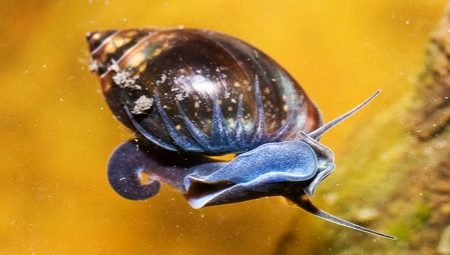
Very often, the inhabitants of home aquariums are not only decorative fish, but also a variety of snails. Sometimes they accidentally end up in the aquarium along with the plants on which the eggs are located, or with the soil. It should be remembered that each type of snail has its own characteristics and requirements for keeping at home.
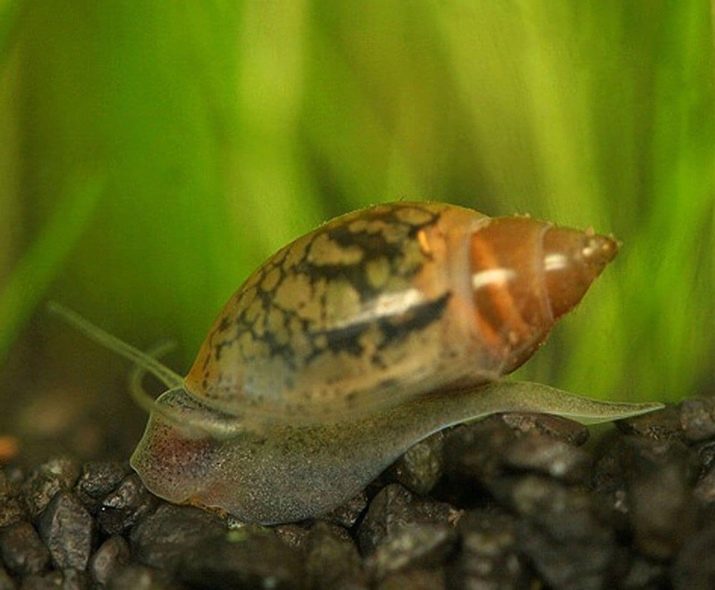
Where does it occur in nature?
The Fiza snail (Physa) belongs to the Fiza genus and the Fizida family. In the wild, she very often prefers to live in the slow-flowing waters of streams, ponds, lakes and swamps.
Fiza lives at the bottom in the silt, crawling over the remains of plants and roots, hiding under the prevailing foliage.
These mollusks are widespread in Europe, Central and East Asia, as well as in northern Africa. Pointed phisa is found in the waters of the Dnieper, Don and in the rivers flowing through the territory of the Caucasus.
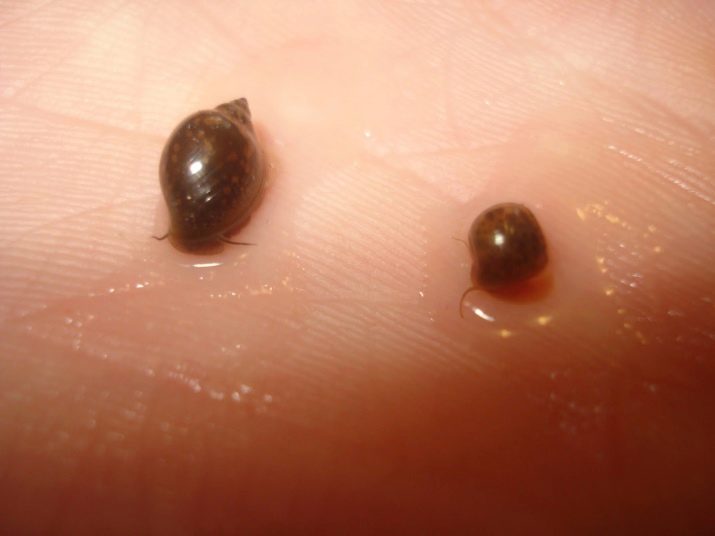
Main types
As an object of aquarium cultivation, the most Fiza snails of the following types are known.
- The physis is pimpled (or vesicular). This is the owner of a small rounded ovoid shell, which is transparent and has thin walls. The smooth surface of the shell is usually horny or yellow in color. The curl is blunt in shape and consists of 3-4 turns, the turns are always twisted to the left.
The body of the mollusk (pseudopod) is blue-black. Thin movable tentacles are located far from each other.
In an aquarium, fiza pimpled does not grow more than 8-9 mm in length, in natural conditions it can reach 15 mm.
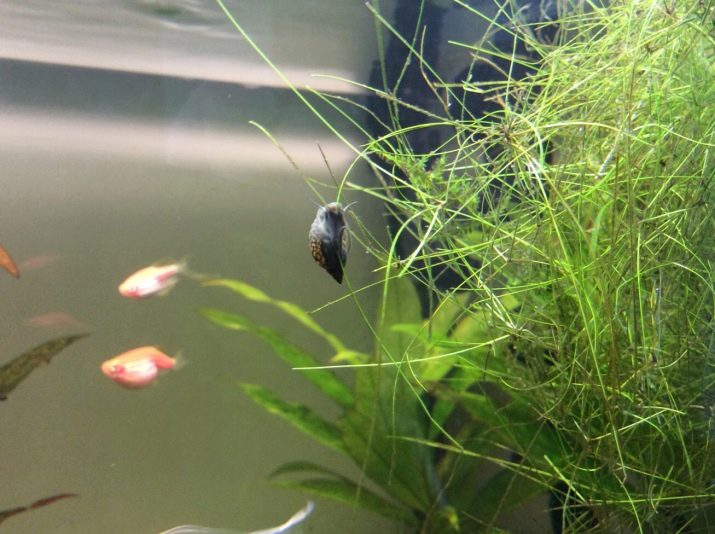
- The physis is pointed. This species is larger, snails can grow up to 17 mm. The mollusk has a shell with 5 whorls, with a pointed top. The color of the shell can be different, from pink to brown.Physa has a pointed body of dark gray color with golden specks, visible through the shell.
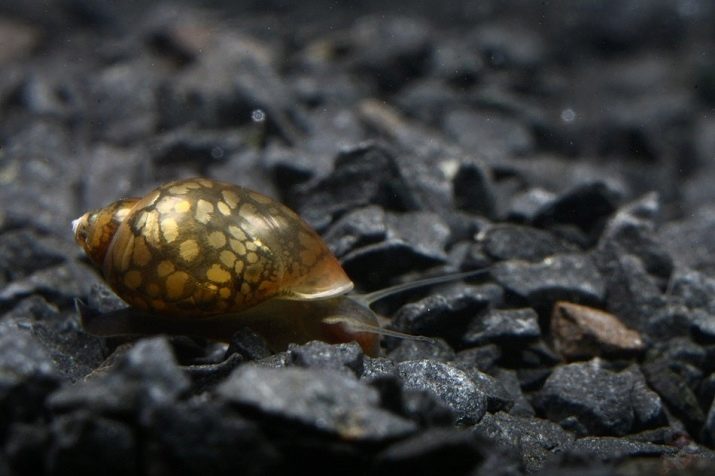
Characteristics
These cochlea can produce thin but tough cobwebs, often referred to as cords. With the help of such a web, the physa marks its place of residence. The snail fixes the thread to the lower leaves of plants or to the pebbles, and then slowly rises higher and pulls the rope along. Having reached the top of the plant, Fisa fixes the other end of the web to the top leaf of the plant.
Having done this several times, the snail gets a convenient path for a quick descent and ascent.
These cords are necessary for the fize in order to quickly reach the surface, since it breathes atmospheric air. The cobweb lasts 15-20 days and can be used by other snails of this species. Phiza is a pulmonary mollusk and breathes with the help of the lungs. The breathing process also takes place with the help of the mantle (skin breathing). The edge of the mantle divides into blades and folds into a shell, as a result of which the area of contact between the mantle and water increases, which is saturated with oxygen.
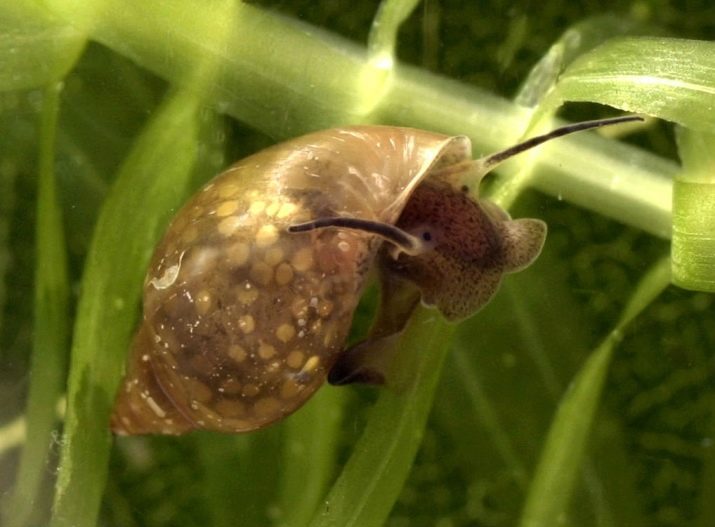
The necessary conditions
The Fiza snail is an unpretentious mollusc. She prefers water temperatures of 20 degrees Celsius and above. The water in which Fiza is contained should be of moderate hardness. This species of snails feeds on the remains of food at the bottom of the aquarium and bloom on its walls. Fiza can also eat ornamental aquarium plants, especially those with feathery leaves, as well as young shoots.
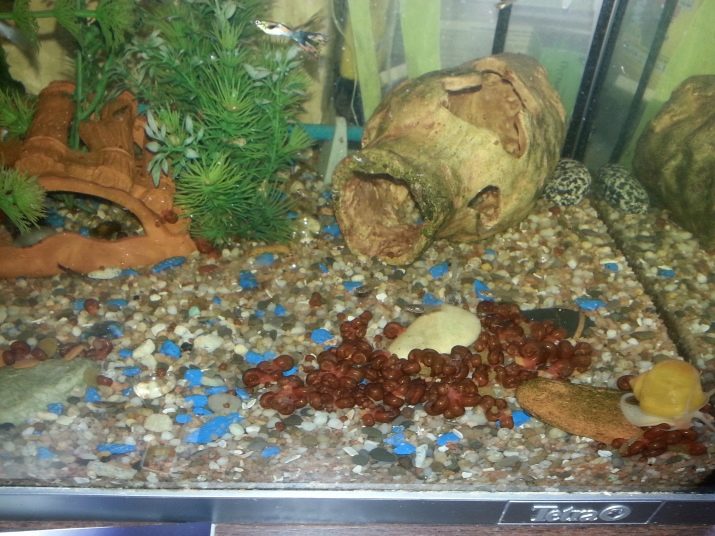
Reproduction
Phiza has male and female reproductive organs in its body, that is, it is a natural hermaphrodite.
Snail eggs (caviar) look like a small sausage that physicists attach to aquarium plants, decor items, or glass.
If the water temperature is 18-24 degrees, then the embryos develop within 12-14 days. Most often, young snails are born in summer or autumn. In the spring, Fizs become adults and can lay their own eggs.

Advantages and disadvantages
Before you start a fiza snail in your home aquarium, you should weigh the obvious benefits and possible harm as a result of such a choice. The positives are as follows:
- Physa destroys dead organic matter and dead plants;
- cleans the surface of the water from the film;
- frees the walls of the aquarium from green plaque;
- eats up the remains of feed.
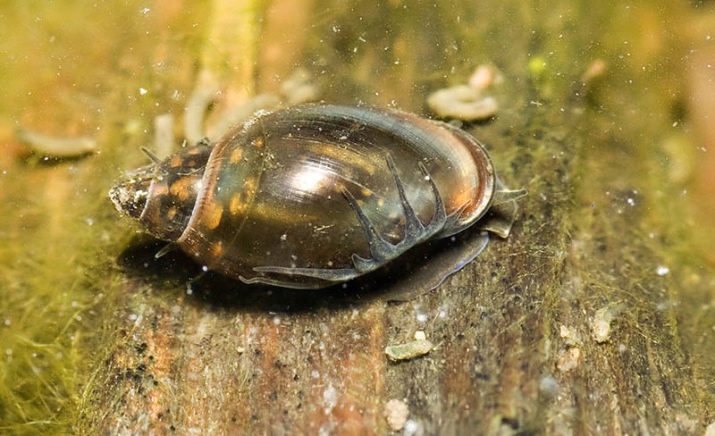
The negative aspects of the content include the following facts:
- fizy spoil aquarium algae, especially with feathery leaves (hornworts, kabombs, pinworms);
- they multiply quickly and can disturb the microclimate of the aquarium (18-26 pieces), these snails are quite enough for a medium-sized container;
- Fiza snails can involuntarily break the shell of fish eggs.
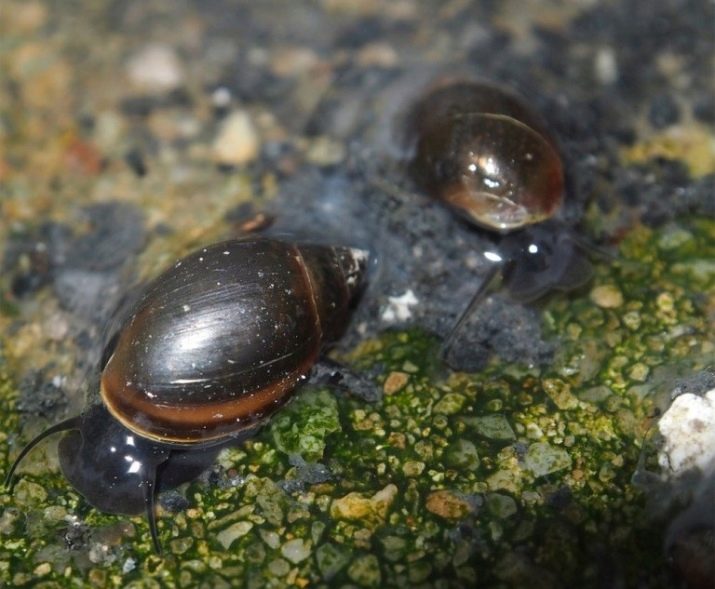
How to get rid of?
If there are too many snails in the aquarium, try to get rid of them in the following ways.
- Catching. It is impossible to catch all the physical ones, but if you constantly catch a certain number of snails, then you can regulate their number. Surplus can be donated to friends or sold.
- Helena snail. Having started this bright predatory snail in an aquarium with fiz, you can easily get rid of fiz in 1-2 months.
- Predatory fish. These snails are successfully eaten by such aquarium fish as cichlids, macropods. You can also get ancistrus catfish, which willingly eat caviar nat.
- Banana peel. Many aquarists use this simple method successfully. A rotten banana skin is placed in a container with fish and fizami, tied to it with a thread. When the snails have clung to it, the skin is removed.
- Chemicals. This is the most dangerous option, as the ecosystem of the aquarium is disrupted. In addition, these snail killers contain copper, which is bad for fish and plants.
- Complete cleaning of the aquarium. A radical and reliable way to deal with an excessive number of snails nat.But, remember that such a total treatment of the aquarium violates the biological balance, and it is not restored so quickly.

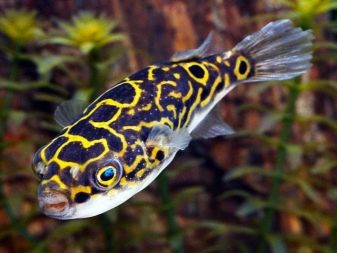
Fiza snails are unpretentious and well clean the aquarium space from excess organic matter.
It is interesting to watch them, especially small children like to look at snails. You should only control the number of mollusks, and then they will give you only positive emotions.
For the pros and cons of keeping snails in an aquarium, see the video.








